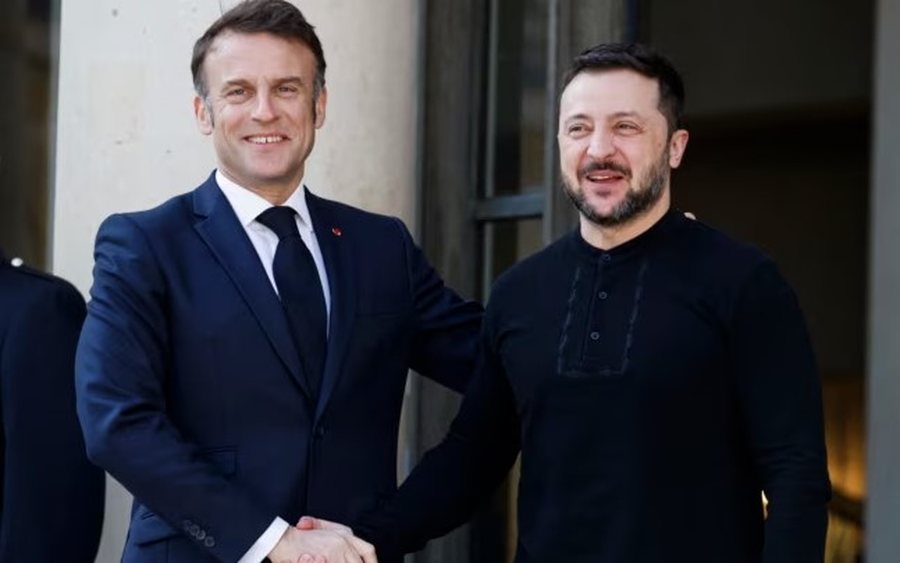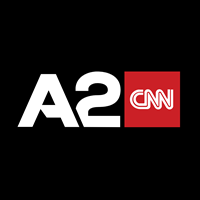
A month after UK Prime Minister Keir Starmer announced the establishment of a "coalition of the willing" regarding the creation of a military mission in Ukraine, many questions remain unanswered.
Starmer said the plan included "British troops on the ground and aircraft in the air, along with others".
This raised immediate questions about who would contribute and how. A month later, answers are few and far between.
Who can send troops to Ukraine?
So far, France is the only country that has made a clear commitment to sending military forces to Ukraine as part of the mission.
The London Conference and subsequent meetings have involved more than 30 countries. Some of them will likely be involved in the form of external support.
Germany, for example, has expressed a willingness to send troops under a UN mandate, but Russia opposes such a mission and would veto it. So Berlin's involvement is more likely to take the form of support abroad, such as logistics.
Ukrainian President Volodymyr Zelensky met with Germany's outgoing Foreign Minister Annalena Baerbock in Kiev on April 1 and said that a "narrow circle of countries" is ready to send contingents.
Several countries have indicated that they could be part of this circle.
Asked about sending troops, Sweden's Prime Minister Ulf Kristersson said he was "ready to help... under certain conditions," while Denmark's Foreign Minister Lars Lokke Rasmussen said his country was prepared for this "in principle."
Australian Prime Minister Anthony Albanese has said his country could send "a small contribution" but faces an election in May. Belgium said it was "logical" for it to participate.
Some of the 30 countries have ruled out sending troops, such as Poland, which is prioritizing its own security concerns over Russia and Belarus. Greece has also said it will not send troops.
Turkey, a major military power that borders Ukraine and has significant air and naval capabilities, would be a significant contributor. However, it has not yet made any clear statements.
What would Western troops do in Ukraine?
The mission has often been called peacekeeping, but this is an inaccurate term.
"If we call it a 'peacekeeping mission,' we usually mean a mission within the UN framework, which requires the participation and agreement of both sides. A 'security mission' does not require Russia's approval," a NATO diplomat told Radio Free Europe/Radio Liberty's Ukrainian Service (RFE/RL).
The idea is that, once a ceasefire or peace agreement is reached, forces will be deployed to convince Ukraine that Russia will not attack it again.
"If there were to be general aggression against Ukrainian territory again, these armies would be under attack and then we would act according to our usual framework of engagement," French President Emmanuel Macron said before a summit held by the coalition of the willing in Paris on March 27.
"Our soldiers, when engaged and deployed, are there to react and respond to the orders of the commander-in-chief and, if they are in a conflict situation, to respond to him," he added.
However, deployment to the front line is not foreseen.
Speaking after the meeting in Paris, Macron said the forces would be deployed in "several strategic locations".
Starmer and Zelensky have said the forces would cover air, sea and land.
Over the past few weeks, military planners have been preparing various scenarios.
NATO diplomats told REL that the final vision of the future contingent has not yet been determined and will depend largely on the circumstances leading to its deployment.
Opposition from Russia
Russia has long made it clear that it opposes any deployment of forces in Ukraine that would include NATO countries. This therefore rules out the possibility of a UN-mandated mission.
However, European countries have indicated that they would be willing to deploy even without Russia's approval. Macron made this clear in a recent interview with French regional newspapers.
"If Ukraine asks for allied forces to be on its territory, it is not up to Russia to accept or reject this," he said.
But even if Russia cannot stop the mission, there may be another obstacle.
Support from the USA
From the outset, the deployment of forces has relied on the existence of what Starmer called a US "backstop".
This refers to providing air support, logistics and intelligence information. But so far there has been no clear signal from Washington that it is willing to help.
On the contrary, there has been harsh criticism from one of US President Donald Trump's closest aides. Steve Witkoff, a key figure in efforts to broker a ceasefire between Russia and Ukraine, dismissed this as "a stance and a pose".
A diplomat from a European NATO member told REL that this is a challenge that must be overcome.
"We need to try a clear proposal and present it to the United States. We should not demonstrate complete dependence on the American presence. We should have self-respect," he said.
"We must act on our own and then invite the United States to join us," he added.
The former head of US military in Europe, Ben Hodges, told REL last month that Europe must act on its own.
"The soldiers I have met over the years from the UK, France, Germany, the Netherlands, Finland and Poland are high-quality men and women, with good equipment," he said.
What happens next?
Since Starmer's first statements, there have been a series of meetings at various levels to work on the proposals.
The path of this process can be long.
"This is an attempt to find a new form of guarantees from our European partners," Serhiy Leshchenko, an adviser to President Zelensky's office, told REL.
"Time is needed. It is not necessary to expect immediate solutions here," he concluded./ REL (A2 Televizion)











